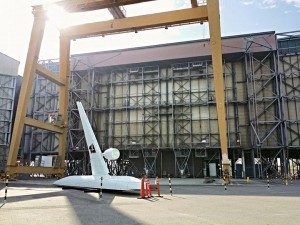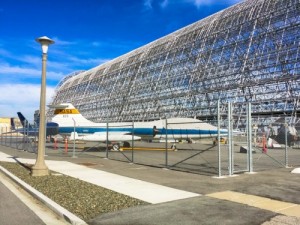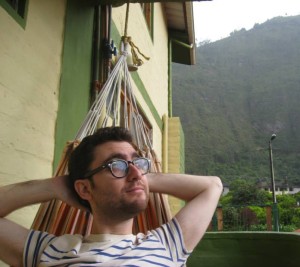By Jennifer Soong
James Laslavic is a second-year student in the MA Design Studies program. He is currently working on his thesis, Conditions of Design: Outer Space and Future Technologies, at the NASA Human Systems Integration Division, where he will be for the next four months thanks to funding from the San Jose State University Research Foundation. Laslavic began his collegiate career as a Web Design major at the Academy of Art University in San Francisco before transferring to Carnegie Mellon and earning a B.A. in Communication Design with a minor in Ethics. He has been working as a freelance communication designer since 2007, and has worked on projects such as a campaign for Pittsburgh Action Against Rape and an At-Home Pesticide Check. Laslavic was a User Experience Design Intern at Fuzzy Math, a Chicago interaction design consultancy, last summer, where he did research and designed for clients such as the Chicago Architecture Foundation and Datamyx.
Recently, Laslavic corresponded with Insights and offered to share a series of photographs documenting his first month and a half at the NASA Ames Research Center in Mountain View, California. He has given us permission to reproduce the following images.
NASA Ames has all kinds of impressive architecture, especially past the high security gate. The buildings purport to be “pure engineering” but in reality exhibit stylistic choices that express the construction era’s influence and the values of the NASA Ames community. Seen here is one of several enormous wind tunnels used for aerodynamics tests.
Laslavic notes that this even larger wind tunnel continues for approximately an entire regular North American street block in both directions.
On site at NASA, Laslavic visits one of the institution’s housed precision cranes.
NASA Ames is located at Moffett Field in Mountain View, which was and still is an airbase also used by the Navy and, to a lesser extent, the Air Force. Pictured here is a T-38 Talon on display at the Moffett Airfield Museum located on base. It was one of the jets used as a regular part of the training for all NASA astronauts. The structure behind it was once a hangar for Air Force zeppelins.
Laslavic spoke with Commander Reid Wiseman, an active duty NASA astronaut recently returned from the International Space Station (ISS), after Wiseman’s presentation on his experience and observations during his last mission. Commander Wiseman may well be using James’ design during his next mission.








